Plastic additives occupy a particularly important position in plastic molding processing, including plasticizers, heat stabilizers, antioxidants, light stabilizers, flame retardants, foaming agents, Antistatic agents, antifungal agents, colorants and whitening agents (see pigments), fillers, coupling agents, lubricants, release agents, etc.
The colorants, whitening agents and fillers are not plastic-specific chemicals, but general compounding materials.
How to choose additives?
Plastic formula design looks simple on the surface, but it actually contains many internal connections. In order to design a formula with high performance, easy processing, and low price, there are many factors that need to be considered when selecting additives, according to the purpose to be achieved. Select the appropriate type of additives. The additives added should be able to fully exert their expected effects and reach the specified indicators.
The specific selection range of auxiliaries is as follows:
◆Toughening – choose elastomers, thermoplastic elastomers and rigid toughening materials;
◆Reinforcement – choose glass fiber, carbon fiber, whisker and organic fiber;
◆Flame retardant – bromine (ordinary bromine and environmentally friendly bromine), phosphorus, nitrogen, nitrogen/phosphorus composite intumescent flame retardant, antimony trioxide, hydrated metal hydroxide;
p>
▲Antistatic – various antistatic agents;
▲Conductive – carbon (carbon black, graphite, carbon fiber, carbon nanotube), metal fiber and metal powder, metal oxide;
▲Magnetic properties – Ferrite magnetic powder and rare earth magnetic powder include samarium cobalt (SmCo5 or Sm2Co17), neodymium iron boron (NdFeB), samarium iron nitrogen (SmFeN), and aluminum nickel;
★Thermal conductivity – metal fibers and metal powders, metal oxides, nitrides and carbides; carbon materials such as carbon black, carbon fiber, graphite and carbon nanotubes; semiconductor materials such as silicon and boron;
★Heat resistance – glass fiber, inorganic fillers, heat-resistant agents such as substituted maleimides and beta crystal nucleating agents;
How to match additives with plastics?
☆Red phosphorus flame retardant is effective for PA, PBT and PET;
☆Nitrogen-based flame retardants are effective for oxygen-containing species, such as PA, PBT, PET, etc.;
☆Nucleating agent has good effect on copolymerized polypropylene;
☆The heat-resistant modification of glass fiber has good effect on crystalline plastics but poor effect on amorphous plastics;
☆Carbon black fills conductive plastics and works well in crystalline resins.
Additives of the same composition have different forms, which also have a great impact on the modification effect.
(1) Shape of additives
○The reinforcing effect of fibrous additives is good (the degree of fiberization of the additive can be expressed by the aspect ratio. The larger the L/D, the better the reinforcing effect. This is why when we add glass fiber, we must add it through the vent hole) ;
○The molten state is more conducive to maintaining the aspect ratio and reducing the probability of fiber breakage than the powdered state;
○The spherical additive has good toughening effect and high brightness. Barium sulfate is a typical spherical additive, so high-gloss PP is filled with barium sulfate to achieve slight rigidity and toughening.
(2) Particle size of additives
①The influence of additive particle size on mechanical properties:
The smaller the particle size, the more beneficial it is to the tensile strength and impact strength of the filling material;
②The influence of additive particle size on flame retardant performance:
The smaller the particle size of the flame retardant, the better the flame retardant effect. For example, the smaller the particle size of hydrated metal oxides and antimony trioxide, the less amount needed to achieve the same flame retardant effect;
③The impact of additive particle size on color matching:
The smaller the particle size of the colorant, the higher the tinting power, the stronger the hiding power, and the more uniform the color;
④The impact of additive particle size on conductive properties:
Take carbon black as an example. The smaller the particle size, the easier it is to form a network conductive path, and the amount of carbon black added to achieve the same conductive effect is reduced. However, like colorants, the particle size also has a limit value. If the particle size is too small, it is easy to aggregate and difficult to disperse, and the effect is not good.
(3) Surface treatment of additives
After the surface of all inorganic additives is treated, the modification effect will be improved. Especially fillers are the most obvious, and others include glass fiber, inorganic flame retardants, etc.
Surface treatment mainly uses coupling agents and compatibilizers. The coupling agents include silanes, titanates and aluminates. The compatibilizer is the maleic anhydride graft polymer corresponding to the resin.
The same is true for our formula design. When designing formulas, we must have a systematic way of thinking. This time we will talk about the importance of systematic thinking in the selection of defoaming agents.
When talking about defoaming, we have to mention the famous Stokes formula: the rising speed of the bubble is proportional to the square of the bubble radius and inversely proportional to the viscosity of the system.
Then when we solve the problem of defoaming the entire system, “viscosity” is the main line of systematic thinking that runs through the entire system.
Then let’s take a look
What additives in the system affect the viscosity?
Dispersant
If your system has color fillers, the selection of dispersants will have a significant impact on the rheological properties of the entire system. This impact may not have a large weight in a general system, or Say we can’t feel it.
But in fact it will still have a significant impact on our defoaming and leveling.
This effect is so significant in high solids or solvent-free systems that it must be seriously considered. Let’s take a visual look at the impact of dispersants on the overall rheology of the system in solvent-free or high-solids systems.
Can be seen in solvent-free orIn high-solid epoxy systems, whether it is organic pigments or inorganic pigments, the deflocculating dispersant suitable for the system can make the rheological type of the system Newtonian (sample on the right side of the photo). It can be seen that the rheological characteristics of the system are like this No matter how high the viscosity of the system is, the bubbles in the system can still rise.
However, if no dispersant dose is added on the left or the dispersant is improperly selected and the dispersant amount is not enough, the thixotropy of the system will have a serious impact on the defoaming and leveling of the later body. In such a system, it is difficult for bubbles to rise and eventually burst.
No addition & problem with dispersant selection
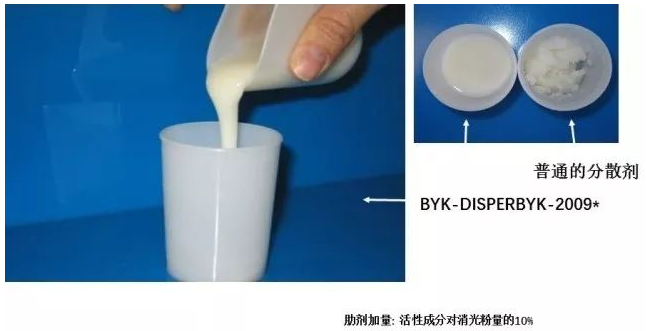
3%SOP BYK-DISPERBYK-110*
So what is the situation with our common more solvent-containing systems? In fact, a large amount of solvents “dilute” and cover up the situation in the photo on the left that is unfavorable to defoaming and leveling.
Due to the large amount of solvent used as a carrier, the weight of this effect is greatly reduced. Sometimes we can even ignore the factor of dispersant viscosity reduction. But the real situation is that when our solvent-based paint is sprayed on the surface of the workpiece, a large amount of solvent has evaporated into the atmosphere, and the paint state on the work surface is closer to a high solids state.
This brings us back to the state we discussed before and we must consider the impact of dispersant viscosity reduction on later defoaming and leveling performance. But if defoaming and leveling has been completed when sufficient solvent carrier is contained, it seems that we can ignore the influence of this factor. In fact, otherwise, this may lead to an increase in the cost of your defoamer and leveling agent additives.
If the system contains a large amount of matte powder without good protection from a special dispersant for matte powder, it will have a great negative impact on the selection of defoaming agents in the later stage. As shown in the picture:
Adverse effects of matting powder on defoaming and leveling:
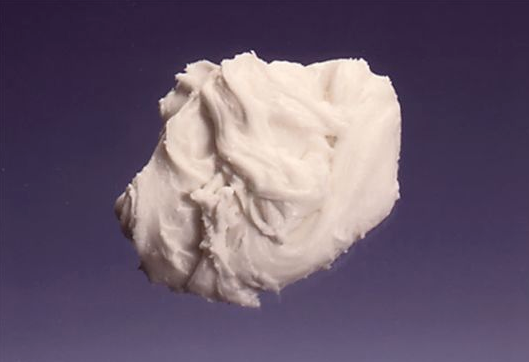
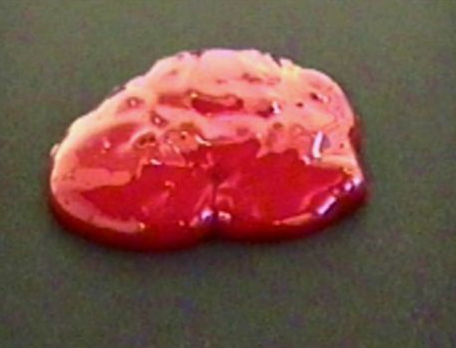
The influence of foam stabilizing tendency factors of substrate wetting agent & leveling agent on the final defoaming agent of the system:
Most of our substrate wetting agents and leveling agents have more or less bubble stability. Because these substances are all interface-active substances. The presence of these substances will cause the bubble wall to appear as shown below.
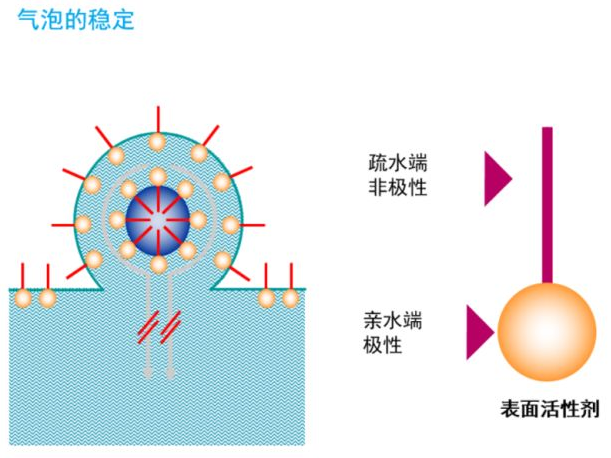
So it is very important to choose a surface additive that is not foam-stable or even a surface additive that can defoam. Especially in high solids or solvent-free systems. As shown below: BYK surface additives with defoaming properties. Generally, additives with stronger ability to reduce surface tension are more stable in foaming. But BYK-378 is an exception. It can strongly reduce surface tension and achieve relatively unstable foaming.
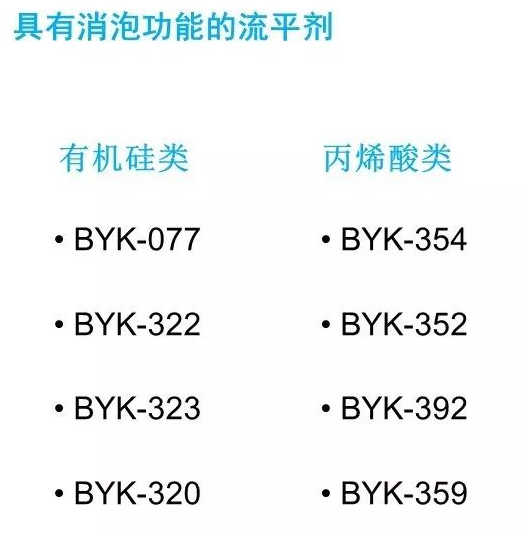
The influence of rheological additives
Whether it is a rheological additive based on the principle of intermolecular hydrogen bonding or a rheological additive based on the principle of intermolecular entanglement, it will have a relatively large negative impact on the flow, leveling and defoaming of the entire system (as shown below).
So when choosing rheological additives, you must understand the purpose of adding rheological additives so that you can choose additives with less negative impact on the system as much as possible.
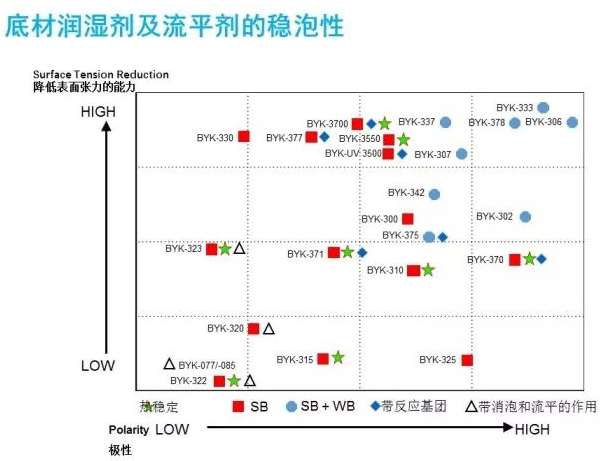
No anti-sag additives
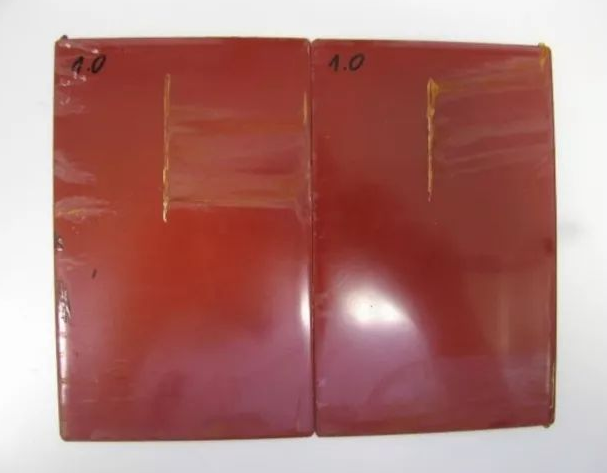
Add anti-sag additives
For example: when selecting an anti-settling agent, it is best to choose a rheological additive with a higher viscosity at point A and a lower viscosity at point B. Such rheology additives will have a good anti-settling effect and have minimal impact on the defoaming and leveling of the system.
x225.png 220w” sizes=”(max-width: 521px) 100vw, 521px” />
The influence of rheological additives
Whether it is a rheological additive based on the principle of intermolecular hydrogen bonding or a rheological additive based on the principle of intermolecular entanglement, it will have a relatively large negative impact on the flow, leveling and defoaming of the entire system (as shown below).
So when choosing rheological additives, you must understand the purpose of adding rheological additives so that you can choose additives with less negative impact on the system as much as possible.

No anti-sag additives

Add anti-sag additives
For example: when selecting an anti-settling agent, it is best to choose a rheological additive with a higher viscosity at point A and a lower viscosity at point B. Such rheology additives will have a good anti-settling effect and have minimal impact on the defoaming and leveling of the system.